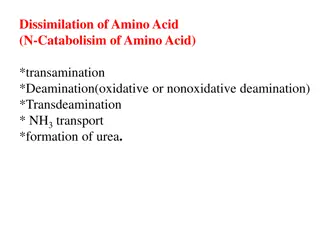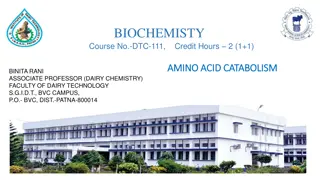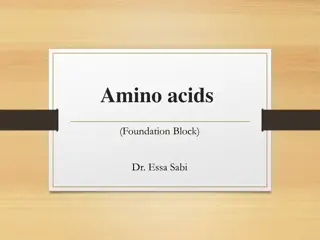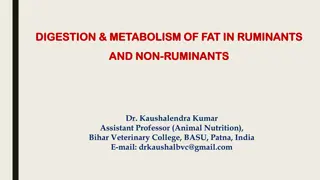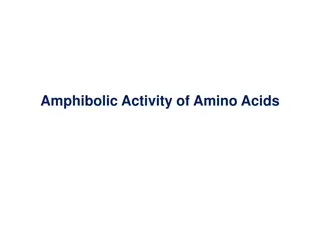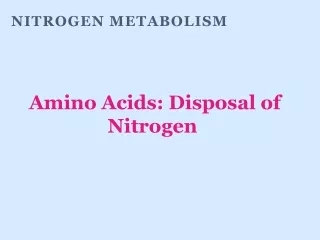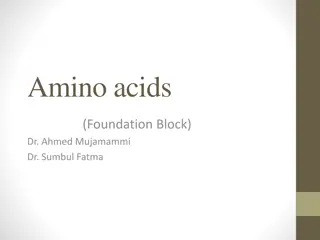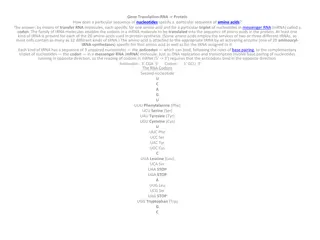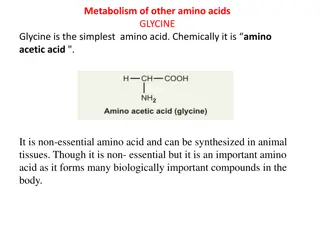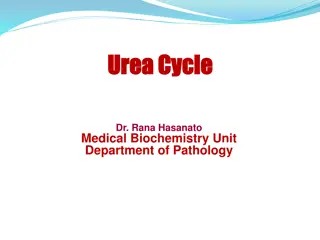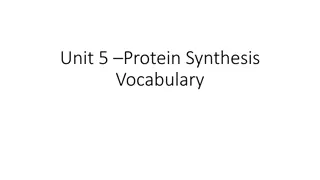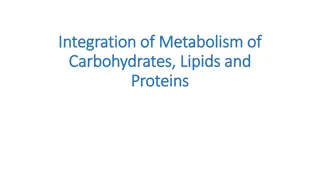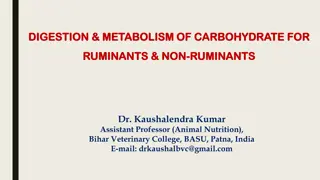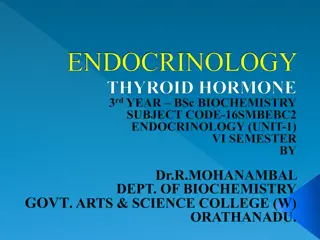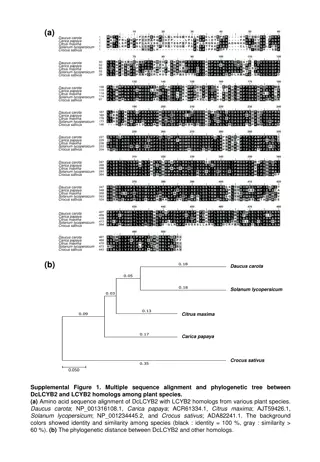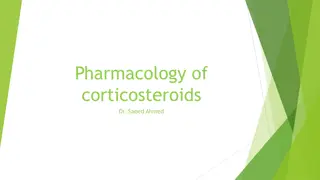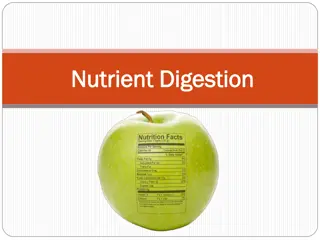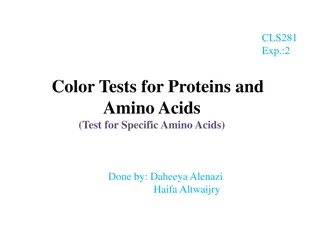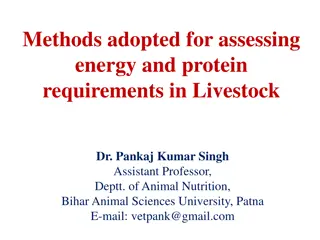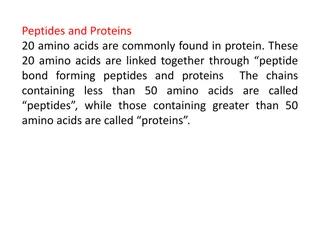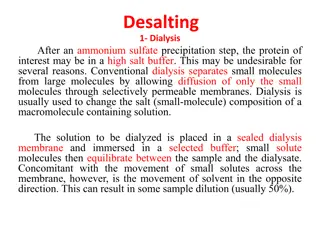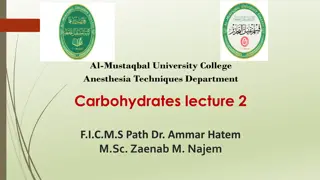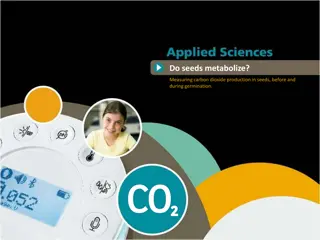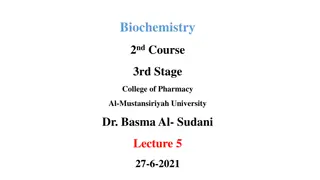Understanding Protein Digestion and Amino Acid Metabolism
The process of protein digestion involves proteolytic enzymes produced by the stomach, pancreas, and small intestine. Pepsinogen is activated to pepsin in the stomach, breaking down proteins into oligopeptides and amino acids. After absorption, amino acids are utilized for protein synthesis and as donors for the synthesis of various macromolecules. Deamination is crucial for amino acid metabolism, leading to the production of glucose or metabolic energy. The liver detoxifies ammonia produced during amino acid degradation by converting it to urea in the urea cycle.
Download Presentation

Please find below an Image/Link to download the presentation.
The content on the website is provided AS IS for your information and personal use only. It may not be sold, licensed, or shared on other websites without obtaining consent from the author. Download presentation by click this link. If you encounter any issues during the download, it is possible that the publisher has removed the file from their server.
E N D
Presentation Transcript
Digestion of proteins (introduction) Proteolytic enzymes responsible for degrading proteins are produced by three different organs: the stomach, the pancreas, and the small intestine. The digestion of proteins begins in the stomach, which secretes gastric juice a unique solution containing hydrochloric acid and the proenzyme, pepsinogen.
- Pepsinogen is activated to pepsin, either by HCl, or autocatalytically by other pepsin molecules that have already been activated. On entering the small intestine, large polypeptides produced in the stomach by the action of pepsin are further cleaved to oligopeptides and amino acids by a group of pancreatic proteases. Oligopeptides digested by enzymes of the small intestine
Amino acid metabolism: After absorption of amino acids, these amino acids used: for protein synthesis and as N and C donors for the synthesis of other types of macromolecule e.g the nucleic acids as well as numerous small molecular compounds. - Deamination (i.e., removal of the amino group): amino acid NH3 -oxo acid
- After deamination, The carbon skeleton may be used for: the formation of glucose or it may be oxidized to CO2 and water with the production of metabolic energy. The ammonia produced by amino acid degradation is detoxified by conversion to urea in the liver.(urea cycle)








